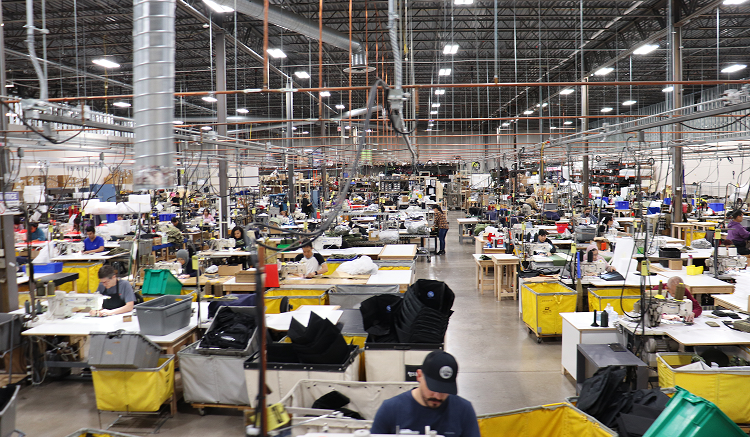The soft goods manufacturing industry is complex. Precision and quality are vital. Both the fashion and medical sectors depend on advanced sewing techniques. These techniques make items attractive, functional, and durable.
Businesses often start as small projects. They grow into large operations. Understanding different sewing methods is crucial for success.
Let’s explore two main techniques: contract sew and cut and sew. We’ll look at their uses, benefits, and considerations in fashion and medical manufacturing.
Contract Sew vs. Cut and Sew: Understanding the Basics

In industrial sewing, two terms often come up: contract sew vs. cut and sew. Both methods involve making soft goods. But they have different approaches, benefits, and challenges.
Contract sewing involves turning design specifications into finished products. Companies usually work with pre-existing materials or recreate generic soft goods. This method is great for large-scale production. It’s cost-effective for many projects. Businesses use contract sewing to produce many items with speed.
Cut and sew starts with raw materials. The process begins with cutting fabric according to patterns. Then, the pieces are sewn together to create the final product. This method allows for more customization. It’s perfect for unique designs and specific material choices.
Cut and sew is often preferred for medium- to large-scale production runs. It helps in product differentiation. Manufacturers have complete control over fabric selection and final assembly.
Contract sewing is best for quick, large-scale production. Cut and sew offers more control and customization, which is ideal for unique products. Each method has its own set of advantages and challenges.
The Role of Contract Sewing in Medical Manufacturing
In the medical industry, precision and reliability are essential. Contract sewing is crucial in making medical garments, cases, and other soft goods. These items are vital to healthcare.
Contract sewing involves working with specialized materials. It requires adhering to strict quality standards. This makes it ideal for medical equipment manufacturers.
By using contract sewing, medical manufacturers can tap into expert knowledge. Contractors understand industry regulations and requirements. This is valuable for complex designs and special materials.
Moreover, contract sewing offers scalability. Medical companies can adjust production volumes based on demand. This flexibility eliminates the need for large in-house manufacturing investments.
Cut and Sew: A Staple in Fashion Production
The fashion industry thrives on innovation and customization. Cutting and sewing are key in fashion production. It transforms raw fabric into wearable art.
Cut and sew is valuable in fashion manufacturing. It gives complete control over production, helping fashion brands stand out. They can choose the perfect fabric and create unique designs.
Common items made with cut-and-sew include custom apparel and accessories. They also include limited-edition collections.
This method offers flexibility for sustainable practices. Manufacturers can select sustainable materials and reduce waste through efficient pattern cutting. This meets the growing demand for responsible fashion.
Cut-and-sew allows designers to bring unique visions to life. They start with raw fabric and transform it into wearable art. It helps in creating custom, high-quality, and sustainable fashion items.
Choosing the Right Method for Bags and Carrying Cases
Both methods have their benefits when producing bags and carrying cases. The choice depends on the project’s needs. These can be material types, design, and production volume.
Contract sewing is great for making standard bags or cases. It works well with pre-fabricated parts. This method is ideal for the large-scale production of simple designs. It’s also useful when customization is minimal and involves only surface changes.
Cut-and-sew offers more flexibility for unique or specialized bags. This method is perfect for working with various materials, like fabric and vinyl. It’s also suitable for adding complex features. Such features include many compartments or custom hardware.
Cut-and-sew provides precise control over the bag’s construction. This ensures that every part meets specific functional and aesthetic needs. Each element of the bag must meet these requirements. Thus, it offers better customization and quality.
Quality Control in Sewing: Ensuring Durability and Functionality
Quality control is crucial in both fashion and medical manufacturing. Ensuring high standards in sewing is essential. This guarantees products are durable, functional, and safe.
In contract sewing, quality control ensures correct and consistent modifications. This includes regular inspections and material testing. It also involves following client specifications.
Quality control starts with fabric selection. It continues through every step of manufacturing. This includes pattern cutting and accurate assembly. The finished product undergoes thorough testing.
In medical manufacturing, extra steps are vital. Compliance with industry regulations is essential. Sterilization requirements must also be a top concern. Quality control ensures safety and effectiveness.
Sewing Techniques that Define Excellence
Choosing between contract sewing and cut-and-sew techniques is important. These methods define the quality, uniqueness, and scalability of production. This is true in both the fashion and medical industries.
Contract sewing offers efficiency and cost-effectiveness for specific projects. In contrast, cut and sew provides unmatched customization and control.
Understanding these techniques is invaluable. It helps businesses navigate the complexities of soft goods manufacturing. The right method matters for making medical equipment cases or launching a new fashion line.
Manufacturers must consider production volume, customization needs, and quality. This helps them make choices that align with their goals and customer expectations.

